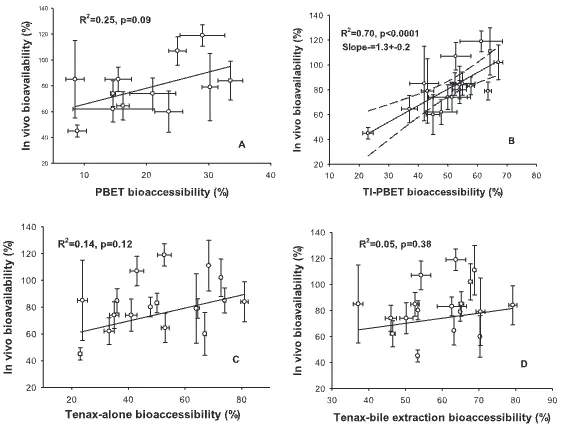Relative bioavailability and bioaccessibility of PCBs in soils based on a mouse model and Tenax-improved physiologically-based extraction test

Abstract
In this study, bioavailability of polychlorinated biphenyls (PCBs) in soil samples aged for various time intervals (7 days, 1 and 5 months) was assessed by in vivo tests using mice. The in vivo bioavailability of PCBs in soil ranged from 45% (PCB180 in soil aging for 5 month) to 119% (PCB52 in soil aging for 1 month), indicating that not all PCBs was available for absorption after ingestion of soil samples. The bioaccessibility was assessed using both physiologically-based extraction test (PBET) and Tenax improved PBET (TI−PBET). Acceptable in vivo-in vitro correlation (r2 = 0.70 and slope = 1.30 ± 0.20) was observed for TI−PBET, not for PBET. Due to dominant role played by Tenax and bile, the TI−PBET was further simplified to Tenax and Tenax−bile extraction methods. However, poor in vivo-in vitro correlation (r2 = 0.14 and 0.05) was observed for the two simplified methods, which may be attributed to the combined effect between sorption sink and components in PBET. Therefore, in order to simply TI−PBET or standardize in vitro methods, it is highly necessary to explore the mechanism about the interaction between in vitro method components and sorption sink, or to screen key factors for bioaccessibility results in the future studies.